Umpires' ignorance of home plate collision rule is major problem for MLB

Below are screencaps of two plays at the plate from Wednesday’s action. In both, the catcher has the ball ahead of the arrival of the runner and has his left foot effectively on the third-base line. In both cases, the tag was made cleanly and the runner was called out. In both cases, the play was challenged and reviewed. In one, the call on the field was upheld. In the other, it was overturned and the runner was declared safe because the catcher was ruled to have been illegally blocking the plate. Can you tell which one had which result?
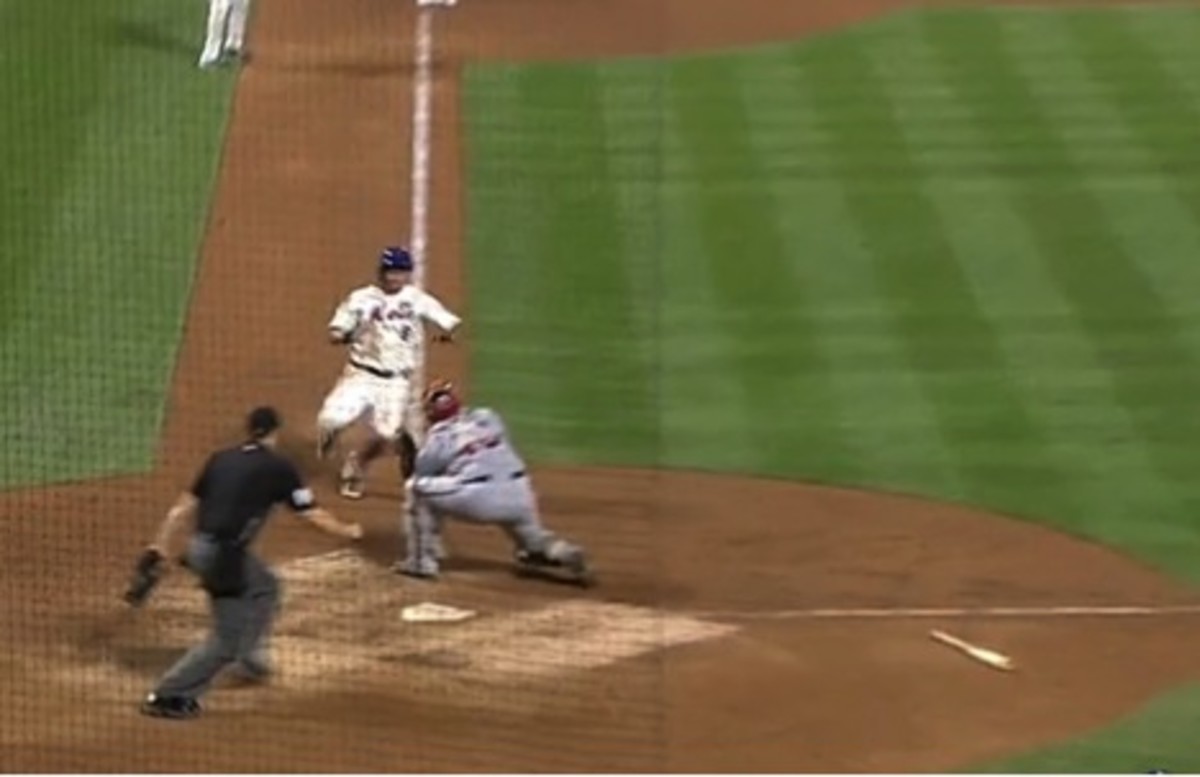
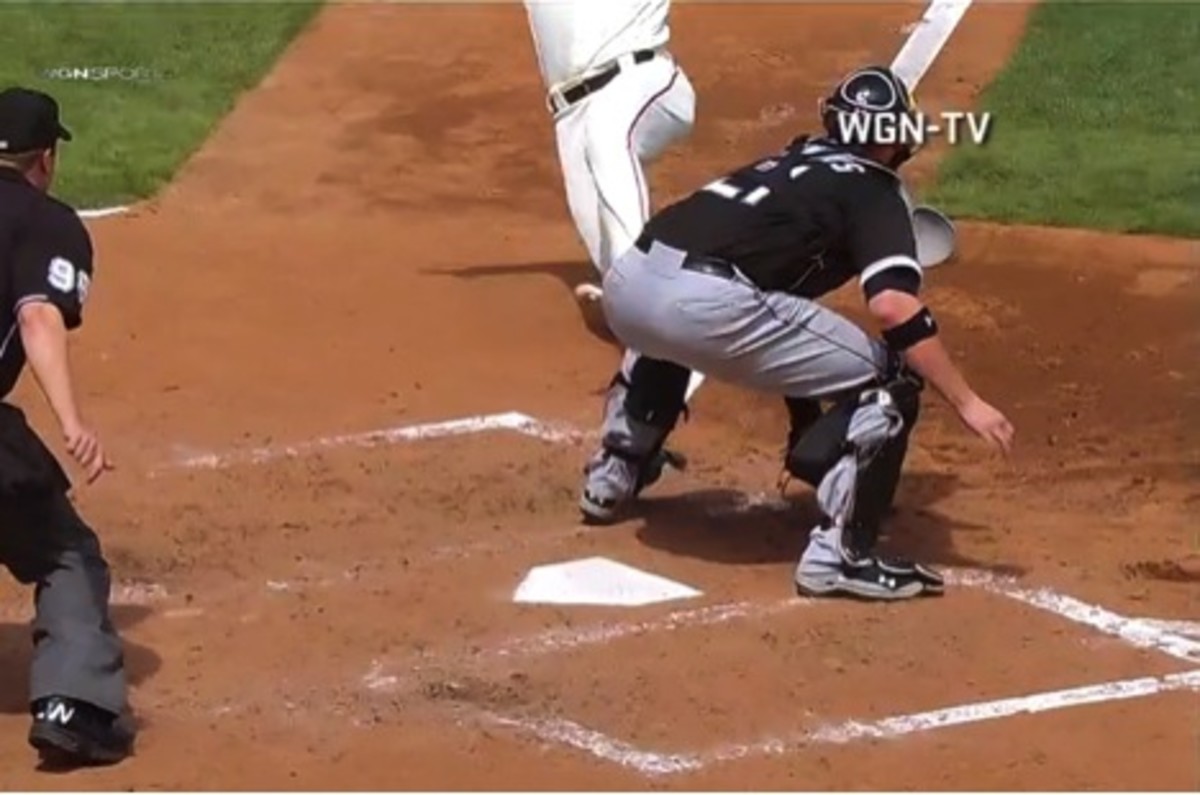
If you can see enough difference between those two plays to uphold one out call but overturn the other, congratulations: You’re qualified to be a replay umpire for Major League Baseball. Because as best I can tell, they are the only ones capable of seeing a difference between those two plays.
It has become increasingly apparent that major league umpires don’t understand Rule 7.13, the new rule put in place this year to protect against home plate collisions. Never was that more obvious that in the contrast (or lack thereof) between the two plays shown above. This is a major problem, because a misinterpretation of the rule directly affects the score of a game, and with the pennant races heating up and the playoffs approaching, it’s not hard to envision a scenario in which an incorrect interpretation of Rule 7.13 changes the outcome of a game that impacts the outcome of this season.
CORCORAN: Injuries shake up AL, NL Rookie of the Year races
I am incredulous over this for two reasons. The first is the obvious: There are umpires who don’t understand and are unable to interpret appropriately and apply a significant rule governing the game they are charged with officiating. The second is that this is not a difficult rule to understand. I’ve gone over this before, but let’s do it again. Here’s the rule (you don’t have to read the whole thing, I’ll explain the key parts below, but I want the full text here so there can be no debate about what’s in the rule):
7.13 COLLISIONS AT HOME PLATE
1. A runner attempting to score may not deviate from his direct pathway to the plate in order to initiate contact with the catcher (or other player covering home plate). If, in the judgment of the umpire, a runner attempting to score initiates contact with the catcher (or other player covering home plate) in such a manner, the umpire shall declare the runner out (even if the player covering home plate loses possession of the ball). In such circumstances, the umpire shall call the ball dead, and all other baserunners shall return to the last base touched at the time of the collision.
Rule 7.13(1) Comment:
The failure by the runner to make an effort to touch home plate, the runner’s lowering of the shoulder, or the runner’s pushing through with his hands, elbows or arms, would support a determination that the runner deviated from the pathway in order to initiate contact with the catcher in violation of Rule 7.13. If the runner slides into place in an appropriate manner, he shall not be adjudged to have violated Rule 7.13. A slide shall be deemed appropriate, in the case of a feet first slide, if the runner’s buttocks and legs should hit the ground before contact with the catcher. In the case of a head first slide, a runner shall be deemed to have slid appropriately if his body should hit the ground before contact with the catcher.
2. Unless the catcher is in possession of the ball, the catcher cannot block the pathway of the runner as he is attempting to score. If, in the judgment of the umpire, the catcher without possession of the ball blocks the pathway of the runner, the umpire shall call or signal the runner safe. Notwithstanding the above, it shall not be considered a violation of Rule 7.13 if the catcher blocks the pathway of the runner in order to field a throw, and the umpire determines that the catcher could not have fielded the ball without blocking the pathway of the runner and that contact with the runner was unavoidable.
First things first. Here’s the part of the rule that applies to the two plays shown above: Unless the catcher is in possession of the ball, the catcher cannot block the pathway of the runner as he is attempting to score. Which means that if the catcher is in possession of the ball, he can block the pathway of the runner. In both cases above, the catcher was clearly in possession of the ball before the arrival of the runner and thus had every right to block home plate. So it doesn’t matter exactly where Wilson Ramos (in the top example) or Tyler Flowers (in the bottom example) put his left foot. He had the ball, so he had the right to be in the runner’s pathway. In both cases, the home plate umpire got the call right on the field, and the White Sox were right to be incensed that the call in their game was overturned and the Giants’ Gregor Blanco was ruled safe.
With that established, let’s take another look at Rule 7.13 as it appears in the official major league rulebook. To call this a rule banning plate-blocking is a misrepresentation of the intent and the content of this rule. There are three paragraphs in the rule, and two of them govern the behavior not of the catcher but of the baserunner.
Think about the home plate collisions you’ve seen that resulted in injury. Although they are effectively wearing armor, it is still the catcher who is hurt in the vast majority of the cases — from Buster Posey, whose broken leg in May 2011 was the primary impetus for this rule, to Buck Martinez (another broken leg), Ray Fosse (fractured and separated shoulder), Bobby Wilson (sprained ankle), Brian Jeroloman (concussion), Jorge Posada (broken leg while in the minors), and so on. This rule was put in place to protect catchers. As such, it is the actions of the baserunners attempting to knock the ball out of a catcher's hands (or, in the case of Pete Rose and Mark Teixeira in the plays linked above, keep them from making the catch in the first place), the collisions, that have been banned.
How a small-time handicapper concocted a wild MLB game-fixing tale
The result is simply that the same obstruction and interference rules that govern plays at the other three bases are finally being enforced at home plate (or would be if the rule were being interpreted correctly). Think about a bunt up the first-base line. Once the first baseman picks up the ball, he can step into the baseline to tag out the runner. He doesn’t have to give the runner a path to first base. He has the ball, and the baseline is his.
The same can be seen on rundowns. Fielders execute those plays while in the baseline and only have to get out of the runner’s way if they don’t have the ball (here’s one between home and third from Tuesday; note there was no discussion of Odrisamer Despaigne or Tommy Medica "blocking the plate"). If a fielder makes contact with a runner while in the baseline and not in possession of the ball, that’s obstruction and the runner is awarded the base. If he has the ball, however, the runner is out. Period.
Similarly, if a first baseman picks up a bunt and steps into the baseline, the runner is not allowed to try to knock the ball out of his hands. Alex Rodriguez tried that in the 2004 American League Championship Series and was called out for interference in a play that has is remembered a decade later as a notoriously embarrassing show of poor sportsmanship on Rodriguez’s part.
Given that these rules have governed plays at the other three bases for more than 100 years, one would think major league umpires would have no problem applying them to home plate. That is apparently not the case. See if you can figure out which of the following runners were ruled out on replay and which were ruled safe. In each case, the catcher has the ball in the screencap below and made a clean tag before the runner touched the plate.
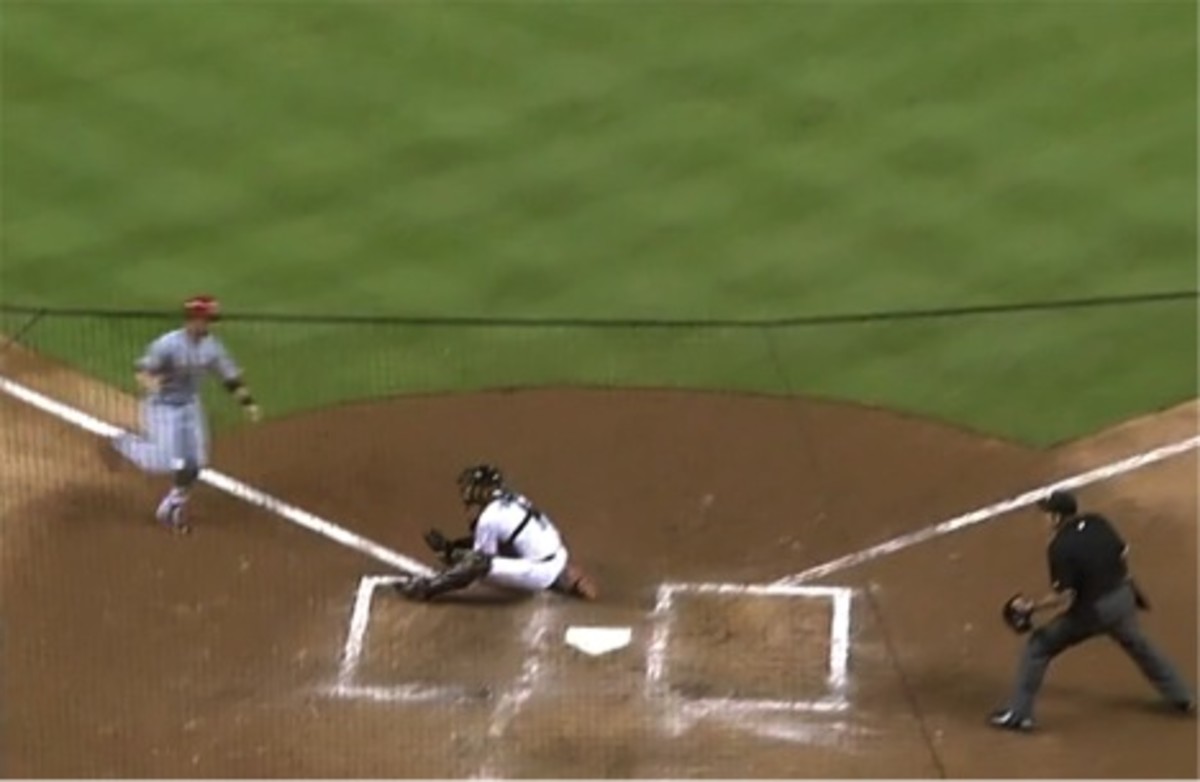
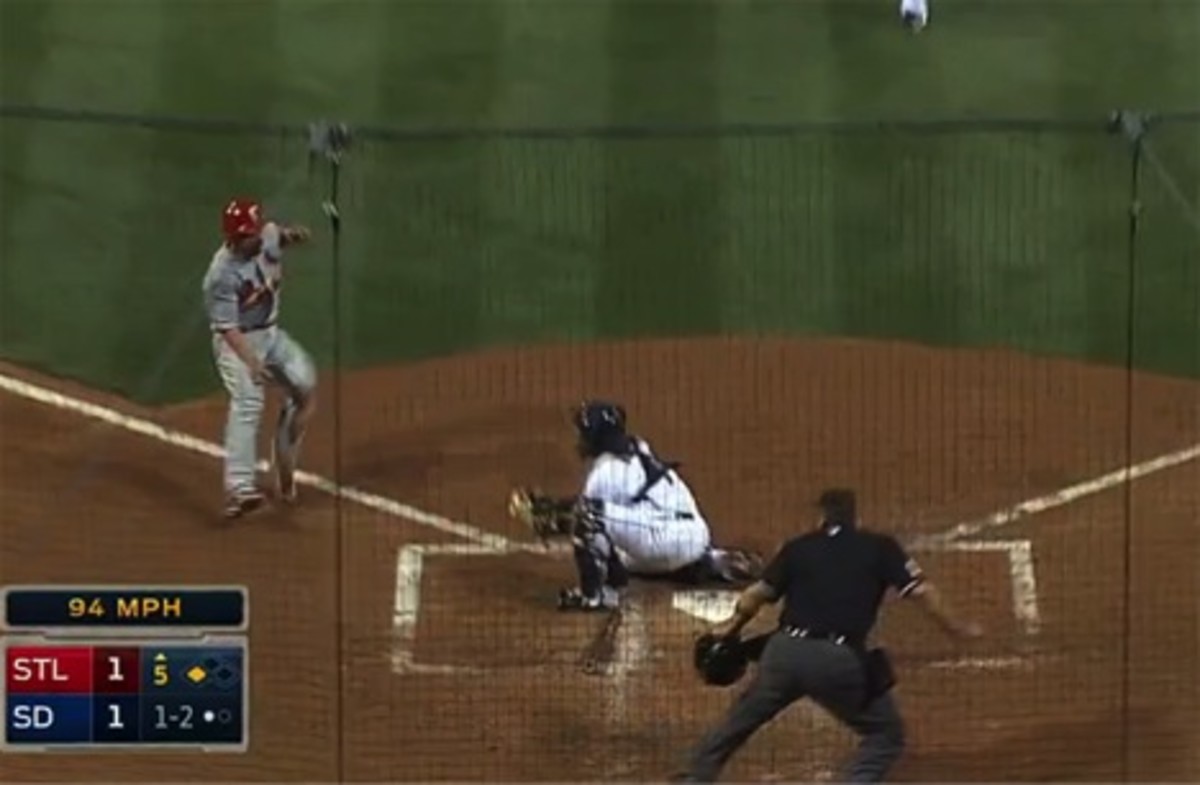
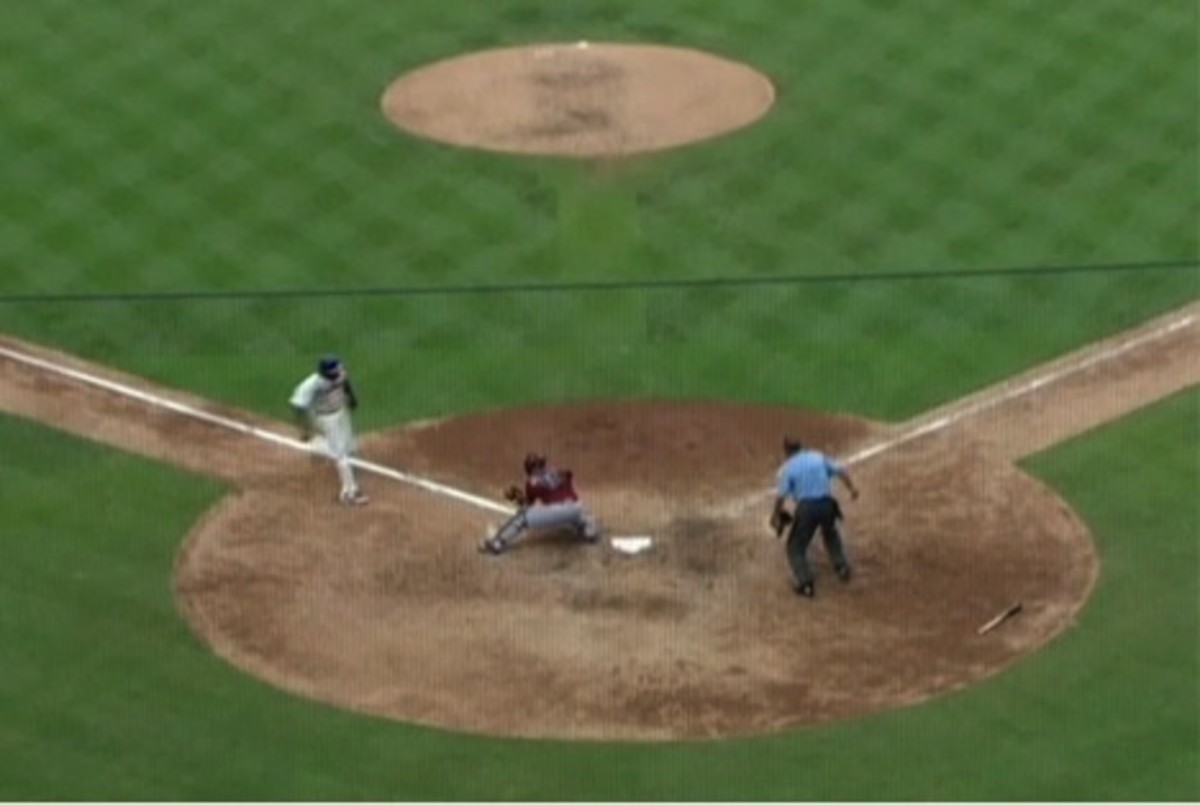
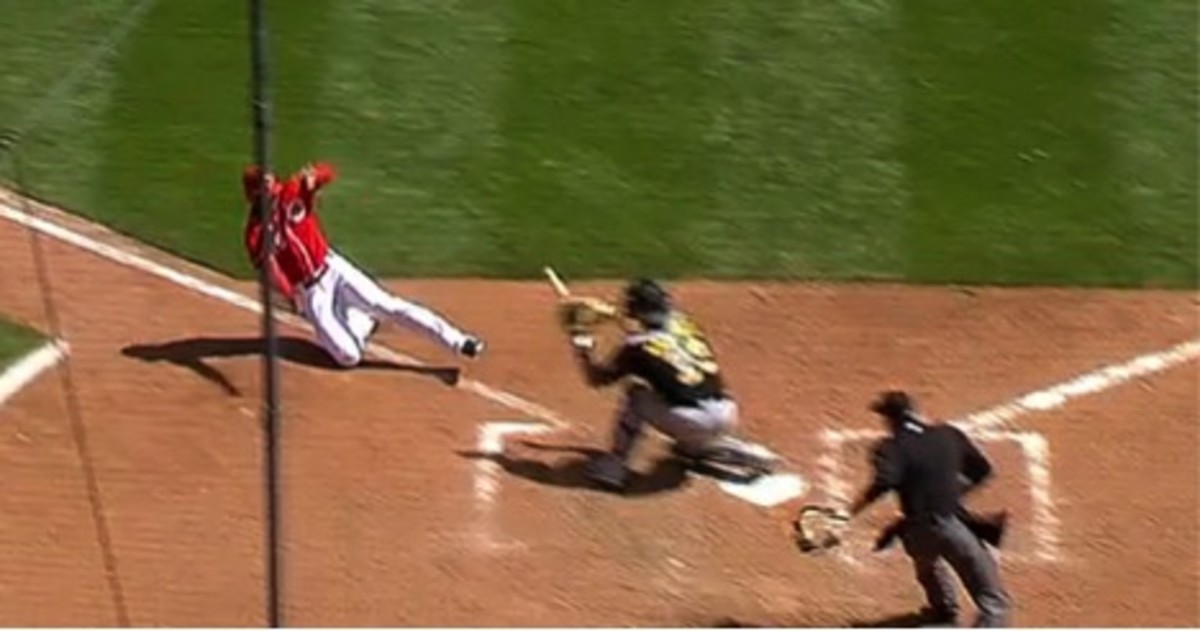
Answer: The runners in the July 31 and July 27 plays were ruled safe on violations of Rule 7.13. The other two were confirmed out with no violation of the rule.
The Strike: Who was right, who was wrong and how it helped baseball
There’s an argument to be made that the two plays that resulted in outs were upheld because the throw drew the catcher into the position seen in the above screencaps, a situation that is indeed covered in the rule. However, by the letter, and I’d argue the intent, of the rule, all four runners should have been out. Again, the key phrase is this: Unless the catcher is in possession of the ball, the catcher cannot block the pathway of the runner. The “unless” means that the opposite is also true, that if the catcher is in possession of the ball, he can block the plate, at which point it is the runner’s job to avoid or minimize their contact.
To their credit, the runners have done a fantastic job of conforming to the new rule. I haven’t seen any hard contact at the plate all season. The rule is doing its job. Now it's up to the umpires — particularly those in the Replay Operations Center, which is where the misinterpretation of this rule has repeatedly taken place — to do their job and learn to interpret Rule 7.13 correctly.
